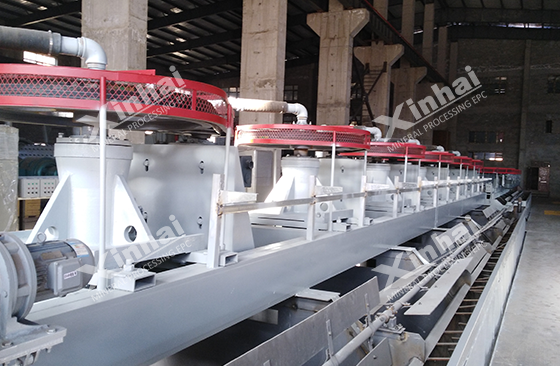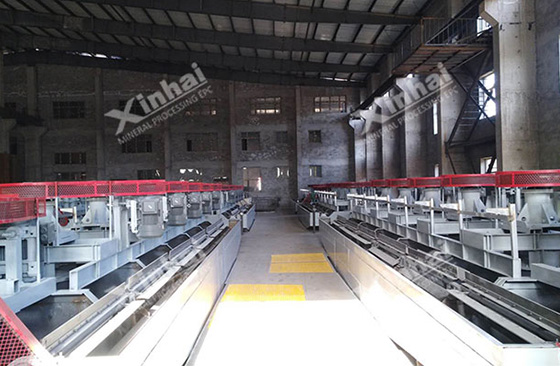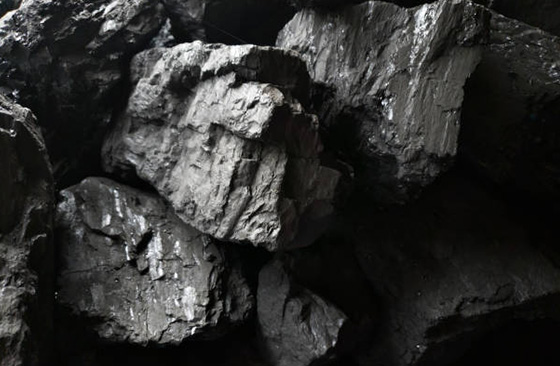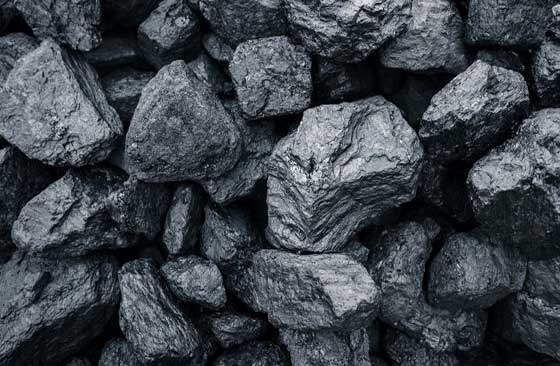Graphite ore types can be divided into three categories mainly based on the crystallographic form of graphite in the ore: dense massive graphite, flake graphite, and cryptocrystalline graphite. Among them, medium flake graphite and dense massive graphite both belong to the crystalline graphite ore type. Flotation is one of the commonly used mineral separation methods for graphite. The following will introduce you to flotation process for these two kinds of graphite ore processing.
Use the table of contents below to navigate through the guide:
01Flotation technology for crystalline graphite ore processing
Flake graphite ore has good natural floatability and low density, so coarse-grained ore is easy to float. Therefore, the collector is kerosene, diesel, etc., and the foaming agent is pine alcohol oil. Because flake graphite ore contains gangue minerals such as calcite and pyrite, inhibitors such as water glass, lime, and soda need to be added to inhibit the emergence of gangue minerals. For carbonaceous shale flotation, starch, organic gums, lignosulfonic acid, etc. can be used as inhibitors. When graphite ore contains metal vanadium, etc., it can be recycled to improve economic benefits.

Compared with other minerals, the flake graphite flotation process has the following characteristics:
1. It is necessary to protect the graphite flakes from being damaged, so the roughing and grinding fineness is relatively coarse, and the roughing tailings are discarded after 1-2 sweeps;
2. The coarse concentrate is reground and refined several times;
3. Before regrinding, cyclone concentration should be used to ensure appropriate grinding concentration;
4. Medium mineral chooses a reasonable return method to return to the appropriate location.
The raw ore of dense crystalline graphite ore has a high grade. Generally, the grade can reach more than 90% after hand selection, and can be used as a product after crushing and processing.
The quality of graphite products is related to the size of the scales. The larger the scales, the higher the quality. The process flow of graphite flotation has the following common characteristics:

1. Stage flotation: The purpose of stage flotation is to protect the ore scales from or less damage. Main process: rough grinding and rough selection, and the obtained coarse concentrate is re-grinded and re-selected multiple times. In production practice, it is found that harder gangue minerals such as quartz can destroy graphite scales, so abandoned tailings need to be removed early. The use of stage grinding and stage flotation processes can improve the quality of graphite concentrate, and the large flake yield will also be greatly improved.
2. Multiple beneficiation: The crude concentrate obtained by rough separation has a low grade. According to the needs of the dressing plant, multiple beneficiation should be carried out. Since the quality of the concentrate without regrinding is not significantly improved, several stages of regrinding and reselection are required in the flotation process to achieve sufficient monomer dissociation of the continuous body.
There is little difference between the flotation of dense crystalline graphite ore and the flotation of scaly graphite ore, but there is no need to prevent the graphite flakes from being damaged during grinding, which reduces the number of grinding stages and increases the working intensity of the grinding machine. In addition, the flotation speed of dense crystalline graphite ore is also relatively slow, because this type of ore contains a certain amount of cryptocrystalline graphite ore, which needs to be ground very finely to float easily.
02Flotation technology for cryptocrystalline graphite ore processing

Since the graphite particles in cryptocrystalline graphite are often embedded in clay, separation is difficult and it is a difficult ore to select. Cryptocrystalline graphite has the characteristics of large amount of collector, slow flotation speed, low recovery rate, and high tailings grade. The difficulty of flotation of cryptocrystalline graphite ore is related to the degree of grinding of the ore and the content of inhibitory organic matter in the ore. Flotation tailings often contain a lot of graphite and generally cannot be used as waste tailings. They can be used as low-grade foundry foundry graphite.
Cryptocrystalline graphite ore has a higher grade, but because the crystals often contain organic matter, it has an inhibitory effect on graphite. Generally, ores can be made into finished products after being manually selected and crushed. Some of them must be enriched by flotation. Due to the low recovery rate, the final tailings are generally not discarded but used as low-grade cast graphite. Since cryptocrystalline graphite is difficult to select, flotation only plays a preliminary enrichment role. The concentrate and tailings can be divided into different grades of products for sale.
03Purification of graphite products
The grade of graphite concentrate obtained by flotation is as high as about 96%. Since silicate minerals and compounds such as iron and aluminum are impregnated in the graphite flakes, it is difficult to use traditional mineral processing methods to further purify it. Therefore, chemicals must be used. And heat treatment method to further remove ash impurities in graphite.

Graphite purification mainly includes chemical purification and high temperature purification:
Chemical purification is divided into two types: wet method and dry method. Wet method purification involves leaching and washing the graphite concentrate in hydrofluoric acid, or melting caustic soda at high temperature, and then leaching and washing. Dry purification uses active chemical gases to react with impurities in graphite to convert the impurities into volatile substances and escape.
High-temperature purification mainly takes advantage of the high-temperature resistance of graphite. The graphite is placed in an electric furnace to isolate the air and heated to 2500°C. The impurity ash in the graphite will evaporate and the graphite will recrystallize.

The above is a brief introduction to the flotation technology for crystalline graphite and cryptocrystalline graphite ore processing and the graphite purification method. The flotation process has a greater impact on flotation indicators, and the best process should be based on improving concentrate indicators and reducing production costs. Therefore, it is necessary to customize the graphite flotation process according to the characteristics of the ore and the production needs of the ore concentrator to improve the ore utilization rate and concentrate recovery rate.


 marketing@ytxinhai.com
marketing@ytxinhai.com  0086 13810327080
0086 13810327080 






































































































 CHAT
CHAT MESSAGE
MESSAGE







